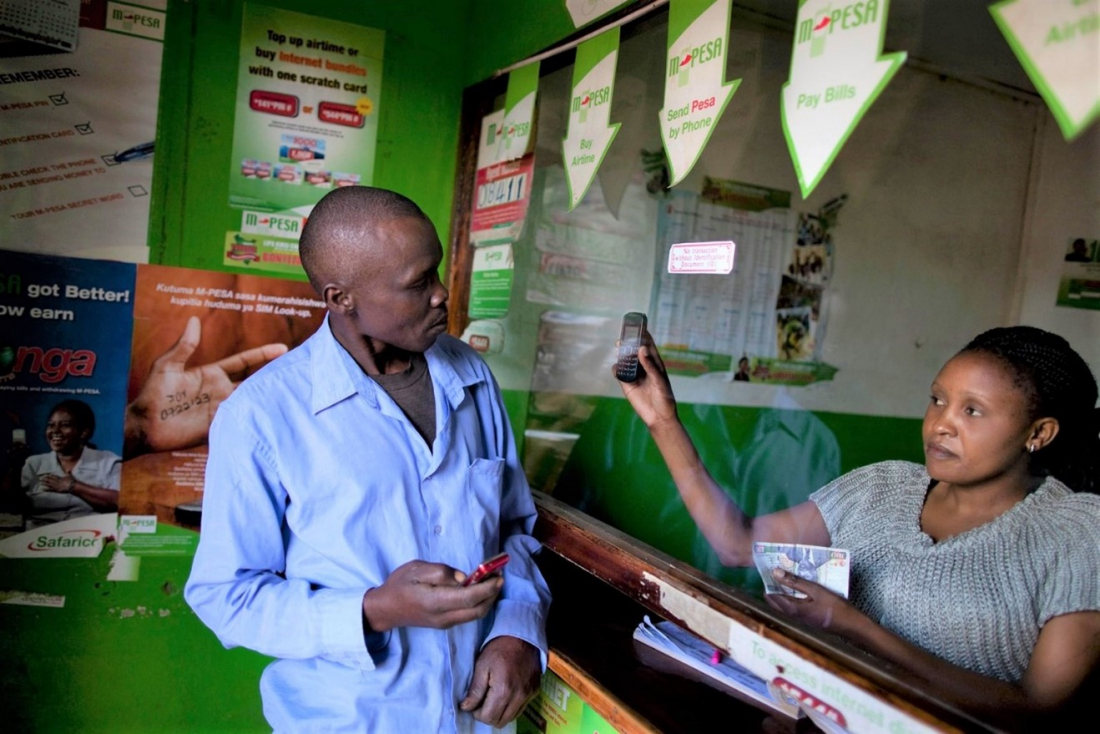Digital Financial Services Can Support Health Care Use and Financial Protection
Date

Photo: Benedicte Desrus - Alamy Stock Photo
Heading
The proliferation of digital technology, including mobile phones, has expanded access to financial products and services for people who do not have bank accounts, resulting in well-documented social and economic gains for individuals and society. However, evidence of whether digital financial services (DFS) can make it easier for people to access health care and protect them from catastrophic health expenditures is fragmented, particularly in low- and middle-income countries where such services have the greatest potential for impact. The need for evidence on these questions is urgent, as the world faces a pandemic that highlights stark discrepancies in access to and use of health care and necessitates virtual financial transactions.
To address this gap, the USAID Local Health System Sustainability Project (LHSS) conducted a global evidence review on emerging models of DFS for health, and explored why, how, and under what circumstances these models contribute to universal health coverage.
Digital financial services are financial transactions -- including banking (savings and loans), insurance, and payment services (remittances, transfers, user fees, and bulk payments) -- that can be accessed via digital channels such as mobile phones, electronic cards (credit, debit, and prepaid), computers, and other electronic instruments.
LHSS used two complementary approaches: a systematic review of the peer-reviewed and gray literature, and interviews with expert stakeholders who work at the intersection of financial services, digital technology, and health. The findings indicate that DFS, if widely adopted, could play an important role in facilitating universal health coverage.
The training offers health care professionals courses on mental health and coping during the pandemic, treating patients with disabilities, providing home care for patients, and improving counseling skills. It also addresses some of the unique social and cultural challenges Jordan’s health care providers have encountered, including gender and equity concerns, since the pandemic hit in March 2020.
Key findings
Digital financial services help users smooth health care and overall consumption during a health shock.
- DFS users are better able than non-users to finance health care when faced with unexpected illness or medical needs. DFS users spend more per capita on health care than non-users during a health shock. This finding suggests that DFS facilitate access to financial resources for health; however, in the absence of financial protection such as insurance, it still means DFS users are paying for the health care on their own.
- DFS users are less likely to forgo other essential goods and services when faced with a health shock. DFS users are able to increase overall expenditures to include health care in the face of unexpected illness, whereas non-users reduce overall consumption.
DFS users who are female, rural, and less educated are more likely to save for health emergencies.
- One study found that the propensity to save for health emergencies was more than twice as high for DFS users than for non-users, even when controlling for socioeconomic and educational factors. In particular, mobile money use significantly increased the probability of saving for health emergencies among rural, female, and less-educated people.
- Extension of credit to these women was possible because loans accessed through mobile phones reduce administrative costs for the lender.
Digital platforms facilitate participation in health insurance.
- Health insurance programs that have digitized enrollment, payment, and renewal processes have seen increases in membership, and have realized substantial operational efficiencies.
- Telemedicine is emerging as an important way to add immediate tangible value for clients at low cost to insurers.
Digital conditional cash transfers facilitate health care use at scale.
- Central and South American countries have demonstrated for years that conditional cash transfers can improve health care consumption, and that these cash transfers can be most effectively transmitted and spent digitally.
DFS for health are gaining momentum
While DFS for health are new, their adoption is gaining momentum. Mobile money, in particular, has given users in low- and middle-income countries the ability to save, transfer, and borrow money electronically, and users are beginning to apply these tools to health care planning and consumption. While voluntary, private health insurance—even with digital enhancements—is still a small-scale enterprise in many countries, national health insurance programs are beginning to realize significant growth by digitizing enrollment, renewal, and payment processes.
Because DFS do not yet fully bridge the digital divide, stakeholders should consider approaches that ensure the inclusion of people who do not yet have access to or control over mobile phones or other digital mechanisms. The devastating global pandemic has underscored the need for DFS for health and may ultimately serve as a catalyst for the development and use of these promising applications.
Read the full report: Digital Financial Services for Health – A Global Evidence Review
